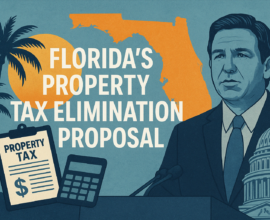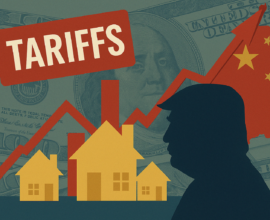Rehabbing a Fix & Flip: A Beginners Overview
Learning the art of rehabbing a fix-and-flip home can be a very generous income opportunity as long as you take the right precautions. Each home investment comes packed with its own separate needs that you must consider before you make a move on it. If you don’t address these factors, it can complicate the entire process and severely impact the profit you are hoping to achieve.
Updated 10-01-2020
Take the time to plan and make decisions in accordance with your schedule. Consider whether you have the availability to make this a full-time commitment.
The common time frame associated with rehabbing a fix and flip is 90 days, but it really comes down to what needs to be done and the time available to you. It can be done faster, but it can just as easily take significantly longer depending on the kind of work you want to put into the property.
Get Into Planning Mode
Before you even start looking at fix-and-flip properties, you must gauge your personal skill level as well as the capital you have available to invest. Once you figure out this initial starting point, it’s important to consider what areas you need to seek additional aid for.
A good way to begin is by putting together a business plan. What kind of investment do you intend to make? You need to think about the location you have in mind for acquiring a property and the type of real estate you want to work with.
From there, determine the amount of work needed to fix up a home so that it’s ready to go up for sale. Consider the development of a budget, how you intend to finance your flip, and the eventual sale of the property itself.
Having personal experience in the business of real estate is a huge benefit. However, networking and having access to individuals who work in various trades — such as electricians, plumbers, and home renovators — are valuable assets to even the less experienced.
Once you’ve put some thought into a general business plan, it’s time to create a budget.
Create a Rehabbing Budget
While you may want to jump in headfirst, wait before looking into the prices of properties you may want to acquire at a county foreclosure auction or via a property wholesaler. Instead, evaluate your rehab budget and determine worst-case scenarios.
Establish exactly what you are working with financially and how much you can invest in an auction property. That figure will tell you what you can afford to bid on.
Spread your budget into different categories that are easy to track and adjust. Your budget plan should be all-encompassing, including (but not limited to) the following.
- County auction costs (if you are the winning bidder)
- Rehabilitation and upgrade costs
- The expenses involved with selling the home when it’s ready to be flipped
- The amount of money you want available as a cushion
Of course, the final price of a foreclosure property at the county auction is somewhat open-ended, and each case is different. The rehab cost of each property will also be a guesstimate. Just do your best to create a realistic budget plan for each property you want to bid on based on available information.
When considering renovation expenses, revisit acquaintances who work in trades and could be beneficial to your flip. These people could help you save money on work that you put into the home, but they could also become a fellow investor in your project and enhance the potential profit should you win the property at auction.
The people providing services are only part of the equation; you must also consider the cost of the materials needed. Many contractors charge a flat-rate fee for a job, but it’s not uncommon to find some who ask for an hourly rate.
When calculating the amount you can bid on the home, take into account the holding costs, including insurances, utilities, interest, HOA or association fees, and property taxes.
It’s recommended to set aside 15–20% of your rehab budget for unexpected situations or expenses. This will prevent you from encountering a situation that jeopardizes everything you are trying to do.
You may also want to consider insurance policies that give you protection while rehabbing. These are usually inexpensive for untenanted homes, but necessary. Alternatively, depending on how you are situated, why not live in your investment property during the rehab? This will save you the cost of your current accommodation (you can rent it out) and probably increase your net monthly disposable income, which you can use on your new investment property.
Financing Your Flip Renovation
There is no debate that you can potentially make a lot of money from the process of rehabbing a house, especially if you buy the property through a county foreclosure auction or from a wholesaler. However, without proper financing, the journey can’t even begin.
The good news is that there are a number of options available to finance your house flipping revamp venture.
Don’t forget about these additional areas when considering what you need to finance.
- If you are buying at a county foreclosure auction, you will need to have a 5% deposit based on your intended bid lodged with the county court where the property is located.
- If you are the successful bidder, you will need to pay the balance of the winning bid to the county court within 24 hours.
- If you are buying from a wholesaler, you will need from $1,000–$5,000 of earnest money (varies greatly) to buy it. You’ll need to pay this within a few days to three weeks of agreeing on a price and closing date.
- In some instances, you may need to inspect the wholesaler’s property (around $300).
- You’ll
- invest in a realtor plus pay closing costs to help acquire a buyer and sell a home once it has been renovated.
- The renovation will involve various labor and material expenses.
When buying properties at the county auction and even through wholesaler deals, you will be looking at cash purchases and cash buying. Conventional financing through a bank isn’t what you are putting into action.
The following are the most reliable areas to acquire funding for rehabbing a house fix and flip.
Friends and Family
A personal connection might be the best route to take depending on your personal situation and relationships.
If you need additional financing and can find a friend or family member willing to get involved with your project, it can open up a lot of opportunity and will still generate plenty of profit. A friend or family member may also become a long-term partner and help with future investments.
Finance Partner
A finance partner can be a great option for house flipping because you can divide the responsibilities involved with making the project a success. The expenses can be split, and your combined knowledge can be used to keep costs/expenses down. Before you go into a real estate joint venture agreement, make sure you research them!
If a finance partner has connections to people who work in trades, they can make renovations more manageable and budget-friendly.
Personal Loans
Personal loans work to an extent but are often only available in smaller amounts, which won’t cover the full process of a house flip. This option can be used, but only in combination with other financing angles.
Bank Loan
If you can secure a short-term loan to buy a foreclosure or wholesale property, you could refinance through a bank (conventional lending) once you have the title and smarten up the property. Since you bought the house at an incredible price, a bank will give you a loan based on a 60% to 70% loan to value (of the home) basis, typically known by the acronym of LTV.
The amount you receive as a loan from the bank will pay off your existing debt and should leave money for some or all of the rehabbing. At the very least, it will be much easier to get a loan for the rehab as it is a small amount. If you are using a private lender, there are a lot of inventive participatory deals that will make the deal worthwhile for both you and the lender.
In some circumstances, the bank will also give you a loan for the rehab because it is increasing the value of the equity they hold in your investment property.
One word of advice: If you use a bank for the refinance, approach them as if your flip is going to be your primary residence. Otherwise, they will charge you a higher interest rate or, at worst, not offer you a loan at all. This is just how banks work.
Once you acquire financing for your flip, it’s time to start the renovation.
Rehabbing Your Flip
When you are planning the renovations on your rehabbing project, it’s important to remember this one key concept: Don’t over-renovate. This may seem like common sense, but it can be very detrimental to your expenses and overall profit.
When you are renovating, keep the following in mind.
Maximize Appeal
There are small changes that make a huge difference on the first impression of a possible buyer. Think about things that catch the eye when someone is first taking in the house. Address a few changes such as:
- Having the front door dressed properly and freshly painted in a nice contrasting color
- Updating outdoor lighting
- Creating curb appeal in the form of plants and flowers in a nice design on the front lawn
- Replacing older exterior displays such as window casings and doorknobs
- Power washing the siding of the home
- Painting trim
Rehabbing Bathrooms and Kitchens
These two rooms are vital to your flip’s success. They generate the most interest and have a significant impact on what a home will sell for.
This means taking several things into account, such as whether:
- The cabinets need to be replaced or just require a fresh paint job
- The kitchen is family-friendly (e.g., slip-proof floors and counters that are rounded off)
- Bathroom tiles need to be replaced
- Fixtures in the bathroom such as toilets and sinks need to be modernized
It’s about generating appeal and considering a family environment. By being mindful of both concepts, you will maximize the incentive for investing in your property.
Cost
With respect to cost, the only thing worth mentioning is to avoid going overboard with the renovations. Don’t put more into rehabbing a property than it’s worth and pay strict attention to the budget that you set prior to putting all of this work in motion.
Personal Style
Do your best to keep your personal style out of any home rehabbing project. While you may feel that you have a great style, not everyone will want the home that you consider an oasis. The more you generalize the home and leave room for a buyer to modify it to their own liking, the more people will want to acquire your investment.
When renovating, it’s also the time to address anything that came up when the house was inspected (only if you bought it from a wholesaler who gave you an inspection period — most don’t). Once you address all of these factors, you will be ready to approach the final stage of this process: selling your flip.
Selling Your Flip
When you have completed rehabbing your home and feel it’s in a position to be competitive on the market, then it’s time to start generating leads and potential buyers. There are a number of ways to generate leads.
Acquire an Agent
Having an agent who is able and willing to do the legwork can spare you from lost time and headaches. They have a working knowledge of what is currently popular on the market and have a network available that can bring buyers to you.
You can also arrange to have an open house, which an agent can help stage to make the property look great and create the atmosphere to land a buyer.
DIY Marketing
You can take it upon yourself to market the home on your own terms. You can set up an open house by yourself, and you can also advertise the sale of your home using a variety of different tools such as:
- Newspaper ads
- Email marketing
- Social media marketing
- Yard signs
- PPC and other online marketing
- In-person networking at investor groups
Other Real Estate Investors
Knowing other real estate investors can lead to opportunity. If you have a set number in mind for a property that you renovated and another investor will take it from you with the hope of selling it for more, then it can be a win-win situation.
Rehabbing a Fix and Flip Can Bring You Big Returns
In all of these scenarios, success comes down to finding qualified buyers who will meet a number that you have in mind. Be willing to negotiate, but also be fully aware of the number that is your absolute bottom line and don’t move from it.
Successfully rehabbing a house flip will leave you with a healthy profit, the incentive to repeat the process, and the development of a network of connections that makes the process easier each time you do it.
Treating other investors properly, paying contractors fairly, and learning more as you go are the perfect stepping stones to making this a very lucrative business.








